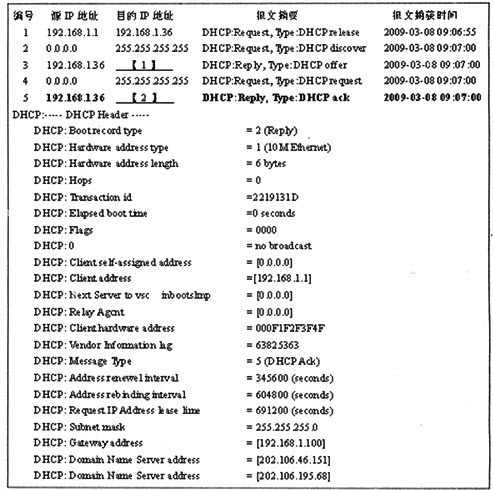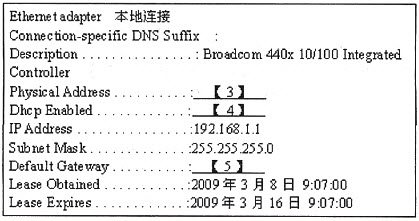问题
填空题
如图1所示,在某DHCP客户机上捕获了5条报文,表中对第5条报文进行了解析,图2是在该客户机捕获上述报文后执行ipconfig/all命令后得到的信息。分析捕获的报文,并补全图中的信息。

图1 在DHCP客户机上捕获的IP报文及相关分析

图2 在DHCP客户机执行ipconfig/all获得的信息
(1)处填()
答案
参考答案:255.255.255
解析:
根据截图中编号1、2、3、4、5通过三次握手源主机最后只发送确认报文ACK。根据对应的DHCP报文摘要中的请求和返回IP,可知192.168.1.36请求的返回地址为255.255.255.255。
